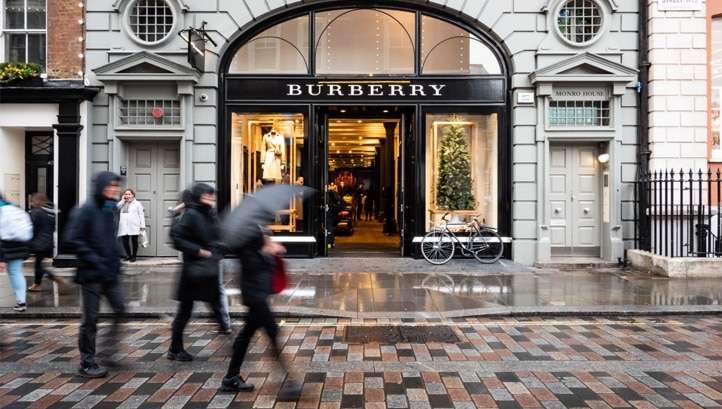The U.K.’s Department for Environment, Food and Rural Affairs is putting into effect an extensive strategy aimed at managing various types of waste, including circularity measures for textiles.
The “Maximizing Resources, Minimizing Waste” decree outlines a simplified plan to foster eco-friendly practices amid the escalating cost of living crisis.
Emphasizing the shift toward circularity and sustainability, the U.K. government says the move is one of the country’s “biggest opportunities”, while also reflecting on the significant progress made in sustainability efforts before the pandemic.
“Resources on our islands — indeed our planet — are finite and precious,” reads the report. “Success relies on us, as a society, to change our relationship with how we use [those] resources.”
Although this initiative is focused on England, it does acknowledge similar programs in Scotland, Wales, and Northern Ireland. It outlines seven specific sectors for action: construction, furniture, electronics, vehicles, plastic and packaging, food, and textiles.
Extending product lifespan
In order to decrease textile waste, the plan aims to extend the lifespan of products, prevent them from ending up in landfills, and promote a profitable textile recycling industry. The government is committed to establishing a robust circularity program based on resale, rental, and repair, in addition to post-consumer reprocessing and recycling. By doing so, it hopes to almost eradicate municipal biodegradable waste in landfills by 2028 and cut residual waste per person in half by 2042.
The fashion and textile industries are resource-intensive, consuming substantial amounts of non-renewable resources, leading to high levels of emissions, pollution, and waste. The industry accounts for between four and eight percent of global greenhouse gas emissions, compounded by the challenges of questionable and obscure multinational supply chains, making transparency and traceability challenging.

In England, it’s estimated that more than one million tons of textiles are discarded annually. This waste is split almost equally between clothing and non-clothing textiles, making up 4.2 percent of all municipal waste.
To enhance its already efficient collection system, the U.K. aims to increase the domestic sorting and reprocessing of textiles. This initiative would leverage the rising demand for recycled materials. Currently, it amasses 620,000 tons of used textiles for reuse and recycling annually. Collections like these are crucial for keeping material out of landfill and incineration, but no economies of scale exist for comparison.
The resale market for garments in the U.K. also presents a promising opportunity, with expected sales reaching $57 billion by 2025, a sharp rise from $27 billion this year according to the department’s most recent projections.
The U.K. initiated several projects in 2021 to boost its textile management efforts, including Textiles 2030, the U.K. Sustainable Textile Action Plan, a voluntary program run by the Waste and Resources Action Program. Participants agree to ambitious 2030 targets, such as a 50 percent reduction in the carbon footprint of new products and a 30 percent decrease in water use. Current participants represent over 62 percent of all clothing on the U.K. market. They will also collaborate on 2030 targets in three areas: designing for circularity, circular business models, and closing the loop on materials.

Greenwashing is also a focus of scrutiny as a means to combat waste. The Competition and Markets Authority, the U.K.’s regulatory watchdog, is targeting misleading environmental claims and will initiate legal action if claims do not meet specific criteria.
Also under review are provisions for a framework to guide businesses managing textiles, apparel, and materials. This includes mandatory take-back systems for used textiles for businesses of a certain size and stringent sorting requirements to highlight items that can be reused, redistributed, and recycled.
To bolster the recycling efforts, the government has funded various programs, such as a 2.5 million pound circular economy innovation fund and a £150,000 award to establish an Extended Producer Responsibility scheme in collaboration with the U.K. Fashion and Textiles Association, the British Fashion Council, and the British Retail Consortium.
Businesses shift focus to circular economies
The news comes as Arup and Business in the Community (BITC) released a survey on Earth Overshoot Day revealing that 51 percent of businesses surveyed have designated teams handling circular economy issues. The survey was released alongside new guidance for businesses advancing circular economy agendas. Twenty-one percent of respondents have invested in the development of new circular business models, and 66 percent have taken at least one action to progress circular economy issues.
Arup and BITC have also published the findings of the Circular Economy Taskforce leadership roundtable series. The report “In Your Hands: Going Circular for Net Zero” provides insight into the senior leadership discussions on barriers to change, consumption-related emissions, and unlocking green finance to adopt circularity in mainstream business practices.

The report suggests a framework of “foundational steps” for businesses interested in advancing in this direction.
Diane Emerson, Director of Climate and Sustainability Services, Arup, and BITC Circular Economy Taskforce Chair, commented, “Coinciding with Earth Overshoot Day, today’s publication of our findings and framework for business action is both timely and essential.”
Emerson says businesses are central to all areas of climate crisis solutions, and “by driving circular principles further into the mainstream we can collectively deliver the systems change required to realize our net zero targets, restore nature and embed social equity.”
Related on Ethos:


